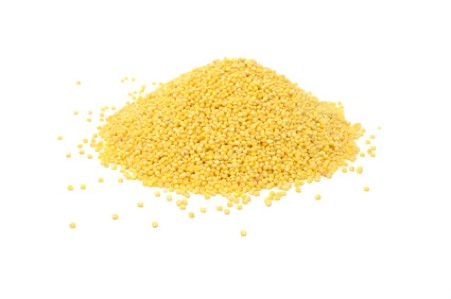By Nadia Marshall
What is Millet?
Millet is a small seeded grass that has been cultivated for over 10,000 years and is widely grown in developing countries; the largest producer being India. It has a short growing season, is resistant to drought and is adapted to poor, infertile soils. There are many different types of millet including pearl, foxtail, proso and finger (red millet - also known as raggi).
What are its qualities?
From an Ayurvedic perspective, millet has the following qualities...
Rasa: Sweet
Virya: Heating
Vipaka: Sweet
Qualities: Dry, Light
Actions on the doshas: Balances Kapha, increases Vata and Pitta in excess
Action on the mind: Rajasic/Sattvic
What are its medicinal qualities?
From an Ayurvedic perspective, millet is considered Sweet, Heating, Dry and Light. This makes it a rather special grain because it has the satisfying, nourishing effect of the Sweet taste but at the same time is light, easy to digest and actually antidotes the damp stickiness that can result from eating other heavier grains (like wheat). Due to its light, heating and drying effect, millet is used as ‘food medicine’ in the treatment of high Ama, dull Agni, diabetes, excess weight, oedema and other excess Kapha (mucous/fluid) conditions. If eaten in excess it may aggravate Vata or Pitta but if soaked and then cooked with a little oil and some cooling spices (like fennel and coriander), it is can be transformed into a relatively tridoshic grain.
The Western viewpoint.
From a western perspective, millet is gluten free, low in lectin activity, alkalising and high in insoluble fibre, phosphorous, potassium, magnesium and folate. However, it has a relatively high GI (60-70), so should be cooked with a little good quality fat and extra fibre to slow down the GI of the whole dish.
How do you eat it?
Millet can be used whole in soups or as a side dish to meals. When using it in soups it just needs to be soaked for a couple of hours before cooking. But millet flour can also be used to make porridges, puddings, hot cakes and baked cakes!
Why do I love it?
My favourite millet is Raggi or red finger millet because it reminds me of chocolate! I first had it in India while doing panchakarma and we referred to our raggi porridge as ‘cocoa porridge’.
Should anyone avoid eating it?
People with thyroid problems may wish to avoid eating millet on a daily basis as it is believed to contain some goitrogen properties.
Where do you get it from?
You can buy Organic unhulled milley and millet flour from most whole-food or healthfood stores. If you live around Northern NSW you can it from Santos and also The Source in Mullum. To get raggi, you’ll need to go to an India grocer... or we sell it at the clinic.
Finally, below is a video showing one way to prepare millet.
Enjoy xxx
Love
Nadia x
References:
“Ayurvedic Cooking for Self-Healing” by Vasant Lad
http://en.wikipedia.org/wiki/Millet
http://www.edensoriginal.com/en/glycemicindex
http://www.alkalizingdiva.com/acid-alkaline-food-chart/
http://www.e-swastya.com/2010/06/ancient-grains-millet.html
http://www.nutridesk.com.au/millet.phtml




